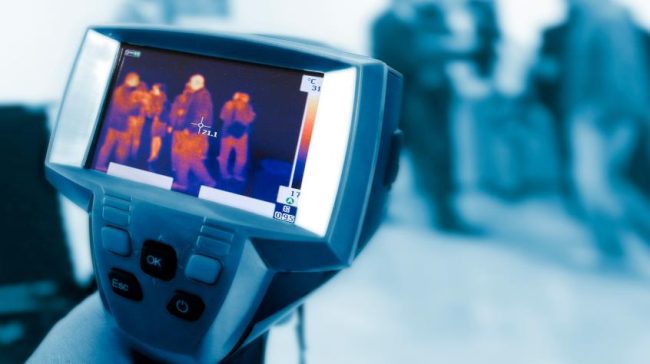Thermal cameras are able to detect potential hazardous gas leaks, allowing you to find and resolve problems before they pose a risk to human health.
Using a properly programmed thermal camera, it is possible to pick up on a wide range of gases, identifying leaks early on. This makes thermal cameras an important safety tool for many workplaces and workers.
How a Thermal Camera Can Detect Gas?
The basics
Gas-detecting thermal cameras are different from thermal cameras not designed to detect gas. In order accurately detect traces of gas, your thermal camera must have all standard components—such as a lens, detector, cooling unit, and image processor. However, it must also include a cooled optical band gate filter. This filter is able to restrict heat radiation wavelengths.

Through a process of spectral adaptation, this allows the camera to pick up on changes in the environment that could indicate the presence of a gas leak. Most thermal cameras are tailored to suit a particular type or class of gases, so you may need multiple thermal cameras if you work in an environment where there is potential for different types of leaks.
How it works?
A thermal camera shows gases by relying on infrared imagery. Using a camera to generate an image of radiation intensity, the camera can show whether a specified gas is present in the air and in what volume it appears. In order to see gas passing through your thermal camera’s lens and camera elements, it’s important that there is a high contrast between the gas cloud and the background.

The amount of radiation entering the cloud must be different from the amount leaving it in order to produce accurate, easy-to-read results. Gas visibility relies on the difference in temperature. If gas is hotter than the environment in which it exists, it will be easy to see on your thermal camera.
Choosing the right thermal camera
Choosing the right thermal camera is essential, as a good camera can help you pick up on dangerous gas leaks before they cause problems for you or your team. A quality thermal camera should be sensitive to minor heat changes, allowing you to see even small amounts of gas and helping you detect a leak at the start. It’s also important that you choose a thermal camera that is easy to care for.

To ensure consistently accurate gas readings, you’ll need to regularly clean and maintain your thermal camera, repairing any damage and ensuring that the camera is up to the tasks you require from it. Remember to stay up to date with the latest gas detection technologies. As tools change, thermal cameras may evolve. If you are aware of new innovations, you can ensure that you always have the best possible thermal imaging solutions on your side.
Are you looking for a reliable thermal camera to help you detect gas in your workplace? Discover the range available right now at the RS Online store.

